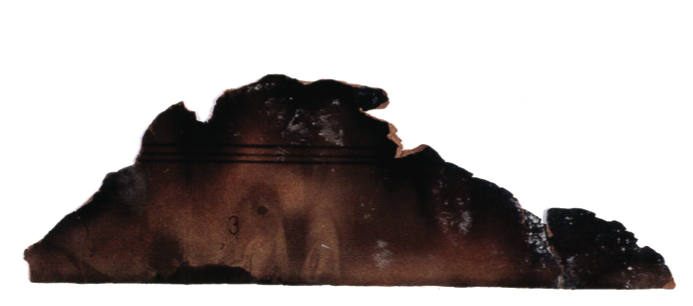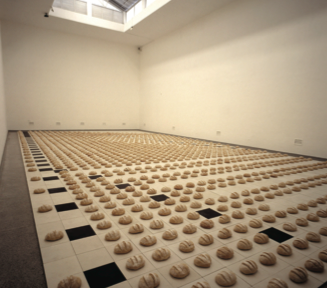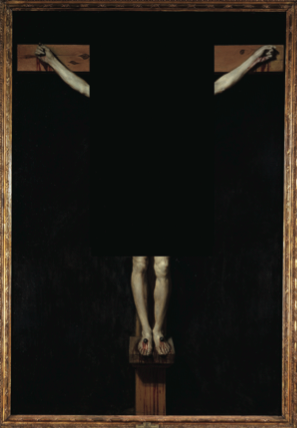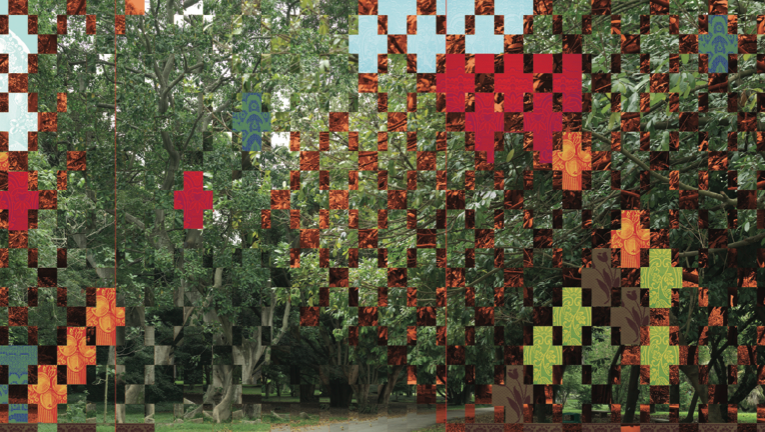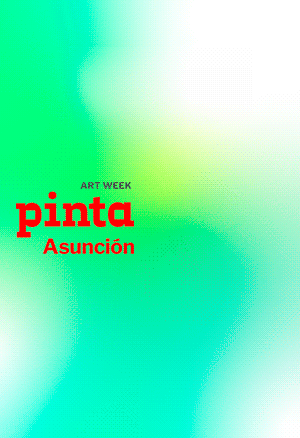Héctor Fuenmayor
The Potential for Negation and Spirituality
Inscribed within the conceptualist trends on account of his reflexive lineage, geographically and culturally anchored in the contradictions of a Catholic Caribbean America, Héctor Fuenmayor is a Venezuelan artist whose oeuvre is difficult to situate both within local and foreign historiographical frameworks. Since the late 1960s, he has developed a body of work in which, besides the dismantling of the precepts of geometric abstraction, he has set out to destabilize structures and language. His research into the iconography of the Christian doctrine and his study of Oriental religions, have served him to develop a taxonomy at the service of the dissemination of a critical idea of spirituality.
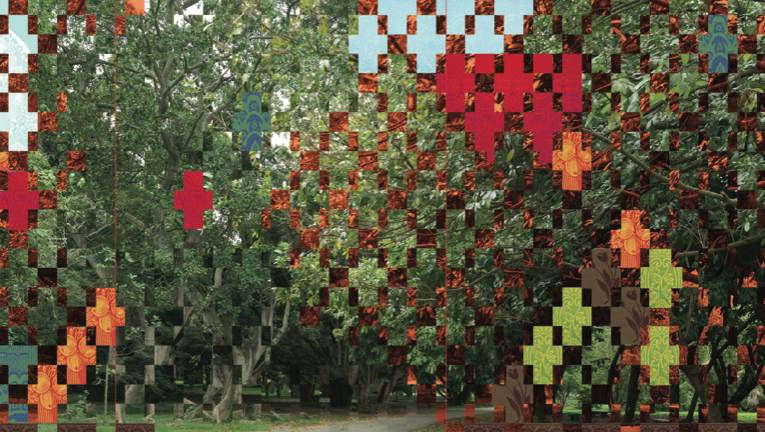
Already in 1981, Elsa Flores had begun to discern a fundamental aspect in his initial reflections: “...phenomenology and existential philosophy have bridged the traditional gap between body and thought, between body and spirit; suffice it to read Merleau-Ponty ́s beautiful and precursor pages dedicated to ́The eye and the spirit ́ to confirm this.1 Long before, Oriental philosophies had postulated the essential unity between man and nature, a unity towards which Fuenmayor ́s work ultimately tends.2 At that time, Fuenmayor evidenced an ironic apprehension of the avant-garde movements which neither harmonized with nor found an echo in the dominant local polarities. That his work is difficult to situate can be corroborated by a natural inclination towards negation: negation of his connections with conceptual art; negation of his artistic guides, such as Malevich, Mondrian, Reinhardt (Duchamp in pectore), or negation of his own work, as is the case in the plays with words of the 1970s in which he examined and questioned categories. Voluntarily confined in a Buddhist monastery in upstate New York in the 1980s, a piece of wood with a nail placed in the wrong position caused him to clash once again with the material world and its opposites, as when in his first solo show (1973) he appealed to painting the walls with an industrial color, dispensing with the whole work. After a decade, Fuenmayor resumed his artistic practice towards 1990, in exhibitions that showed his need to remain isolated in the periphery of the art world. At that time he created the installation Vitrinidad Una, on an invitation from the 1st Barro de América Biennial (1992), turning his back to the exhibition with a huge free-standing wall made of hard packed mud (tapia) that was at the same time Wailing Wall and Buddhist altar, resting on a floor of “tablillas” (tablets) inspired by Mozarabic architecture and only observable through the outward-facing showcases. Equally oblique with respect to the world of art was his participation in an exhibition in which he presented Right and Wrong, a work that originated in the mentioned fortuitous encounter with a misplaced nail as he chopped wood in the New York monastery.
His spiritual concerns are always present, as is the case in a series of installations among which mention may be made of The Multiplication of the Loaves (CCS-10, Galería de Arte Nacional, Caracas, 1993), a large-scale floor piece based on reflections on complicity and guilt. Immersed in the dilemma of form and void in Oriental thinking, he would attempt, in a single ambitious proposal, a negation of history, art, and the individual. This latter line describes the process of a seminal work – Muerte y Resurrección – a key piece in his trajectory. Developed in three stations and presented in Ciudad Bolívar (Venezuela, 1994), it was initially titled Muerte e Insurrección. Later, on finding out about the burning in one of the stations, where a small fragment of the drawing fortuitously survived, the artist renamed the work. In the first station, he ironized the theories of abstract painting – in an allusion to Malevich– by means of a white plane incorporating a white paper envelope. This station raised the question of the negation of history. The second station posed the negation of art through the incineration, in an oven made with artisanal cobblestones, of previous works by the artist, with the casual exception of a fragment of a drawing featuring three pencil lines and the number 3, featured just opposite the wall against which the Libertador Simón Bolívar had had General Manuel Piar executed by a firing squad on the grounds of alleged insurrection. In the third station, the artist secluded himself to meditate for three days in front of a Buddhist altar in the precinct where Piar had been imprisoned. This action posed the negation of the individual. Besides being a direct allusion to the notion of purification inherent in Oriental thought as opposed to the symbolism contained in Occidental thought, and to structure as a thought system, it also implied the values related to the Christian trinity, the recurrence of the idea of the negation of art and the value of language as transcendent evocation of the physical object. With this immolation of works spanning twenty years, Fuenmayor contemplated abandoning art. Then, he says, “I gradually came back into contact with things I had touched upon in my beginnings, such as painting sometimes conceptualized as contradictory”.
In 2007, Fuenmayor presented in Caracas two solo shows, one based on Cruz y Ficción, a work dated 1978, (at the Chacao Cultural Center), and another (at Periférico Caracas / Arte Contemporáneo) featuring a series of works inspired by a tree of the species Ficus religiosa, photographed at the Caracas Botanical Garden, which hosts trees of this species, the same under which Buddha received enlightenment. In the Chacao exhibit, the central theme was the body of Christ represented in art history and covered by a black rectangle in the manner of a robe. Challenging idolatries, Fuenmayor once again delved into the sores of a modernity gestated by the iconoclastic who, according to the scholar Joseph Koerner, were the only true idolaters. For his part, Fuenmayor invokes the duo void-form through the displacement of the sacrificed body. In the exhibition at Periférico Caracas, Buddy tree (la escuela de los coincidentes) has its point of departure in the modulations which he calls “tablillas” /small boards (questioning the insistence of modern painting on reticular geometry) and the image of the tree appears fragmented in a configuration that equates cross and void and simultaneously exhibits its oblique architecture. From this confrontation emerges an inclination towards Oriental thought that contrasts with the greater synthesis of Occidental arts reduced to a confrontation of verticals versus horizontals. Here, Jean Francois Chevrier ́s analysis of the evolution in the relationship between landscape and photography hurls us into speculation. Once the stage of communion between the contemplative and the scientific gaze comes to an end, modernity leaves the landscape to ecology. Based on a quote by Rilke3, Chevrier concludes:”...the art of landscape is a way of contemplating the origin (or the work of creation), since such contemplation precedes any strictly material or psychological interest, and is ultimately the only foundation of a true culture of landscape”.
We might share with Fuenmayor a possibility not contemplated by Chevrier: that the potential for negation in art bridges the gap between the being and spirituality.
1 The passage included in this book to which Flores makes reference states:
“Visible and mobile, my body is a thing among things; it is caught in the fabric of the world, and its cohesion is that of a thing. But because it moves itself and sees, it holds things in a circle around itself. Things are an annex or prolongation of itself; they are encrusted into its flesh; they are part of its full definition; the world is made of the same stuff as the body”.
2 Elsa Flores, La naturaleza y la huella del hombre, in Convergencias, Monte Ávila Editores, Caracas, 1983, p. 130.
3 “To see landscape thus, as something distant and foreign, something remote and without allure, something entirely self-contained, was essential if it was ever to be a medium and an inspiration for an autonomous art, for it had to be distant and very different from us, if it was to be capable of becoming a redemptive symbol for our destiny. It had to be almost hostile in its sublime indifference, if it was to give a new meaning to our existence with its things”. Rainer Maria Rilke, “Concerning the Landscape”, in Oeuvres, prose, edition by Paul de Man, Editions du Seuil, París, 1966, p. 372.
Profile :
Héctor Fuenmayor was born in Caracas in 1949. He began his study of art at the “Cristóbal Rojas” School of Visual and Applied Arts in 1966. An artist initially included by some critics within the local conceptual art movement, Fuenmayor presented his first exhibitions in the early 1970s. From the time of his solo debut at Sala Mendoza in Caracas in 1973, through a work titled Amarillo Sol KYV68, he showed an interest in revising the precepts of geometric abstraction. In that first one-person show, Fuenmayor simply used the industrial yellow paint whose code was represented in the title to paint the whole exhibition space, thus immediately aligning with a nascent local avant- garde scene which he shared with artists such as Claudio Perna, Diego Barboza, Antonieta Sosa, Eugenio Espinoza and Sigfredo Chacón. His following solo shows, “La palabra Muestra”, at BANAP Gallery, Caracas, 1975, and “La Premisa es Dudar”, at the Gallery of National Art, Caracas, 1979, kept him treading the path of an experimental research particularly conspicuous for a reflexive approach to art and its context based on plays on words, the utilization of techniques such as frottage, photocopying or Polaroid prints, in which his existential, philosophical and spiritual concerns could already be perceived, as they would continue to be throughout his future trajectory. Along his career, Fuenmayor has explored every available discipline without neglecting painting, drawing or installations. Recently, and after an interval of 30 years, he has made his comeback as a solo exhibitor with Cruz y Ficción, featured at the Chacao Cultural Center, Caracas, 2007, and with Buddy Tree (La escuela de los coincidentes), at Periférico Caracas / Arte Contemporáneo, Caracas, 2007.
Particularly noteworthy among the group shows he has participated in are the 5th Havana Biennial, 1994; Re-Aligning Vision, Archer M. Huntington Art Gallery, The University of Texas, Austin, 1997; Jump Cuts. Venezuelan Contemporary Art. Colección Mercantil, Americas Society, New York, 2005 and CIFO Art Space, Cisneros Fontanals Art Foundation, Miami, 2007.
He lives and works in Caracas.

